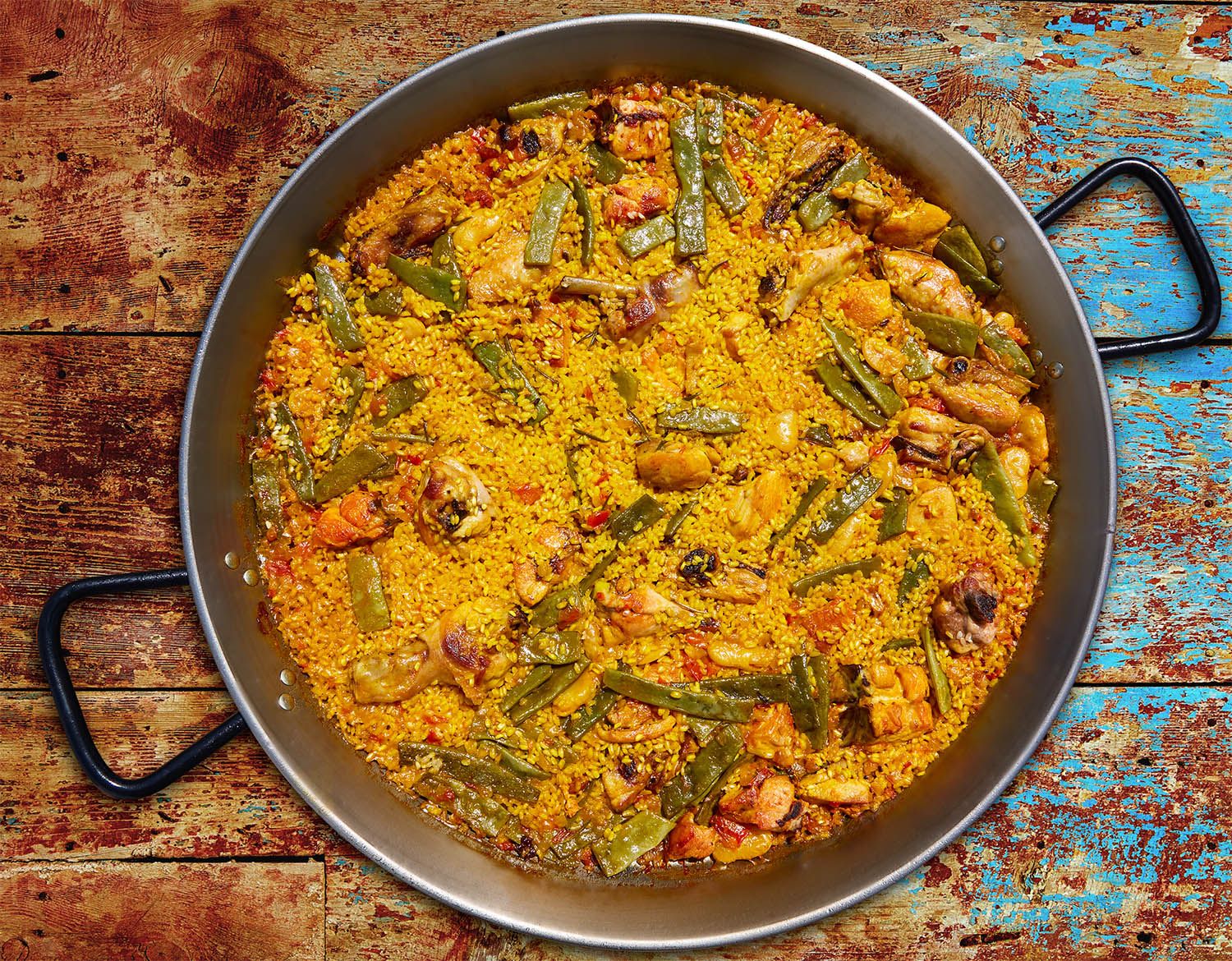Paella Valenciana: How Filipinos Localized This Spanish Dish

Paella is a traditional rice dish, supposedly originating from Valencia, Spain. The namesake paella Valenciana is one of the region's treasured culinary specialties, and many consider it the original version of this beloved concoction.
Chicken, rabbit, green beans, and artichokes make paella Valenciana distinct. Its signature yellow color stems from saffron and it’s also generously seasoned with paprika.
With the country’s 300-year shared history with Spain, it’s not unusual to see Spanish influences embedded in local cuisine. Paella is one of the many dishes that Filipinos have modified to their tastes. The Filipino take on paella Valenciana, also known as arroz Valenciana, looks similar but uses different ingredients.
The Difference Between Arroz Valenciana and Spanish Paella
Rabbit isn’t as accessible a protein in the Philippines, and it’s one of the key differences between arroz and paella Valenciana. However, Filipinos have also discovered another way to prepare this rice dish.
Paella Valenciana cooks over an open flame in a traditional paellera, a wide and shallow round pan usually made of carbon steel. The Valencian version uses bomba, short-grain rice popularly grown in the region. Spanish folks cook it with chicken broth, adding chicken and rabbit as the star proteins. Meanwhile, saffron and paprika are responsible for its vibrant golden hue.
The Filipino iteration, arroz Valenciana, replaces the short grain with thick and soft malagkit or glutinous white rice. Boneless chicken and chorizo de Bilbao offer flavor and texture. Instead of chicken broth, Filipinos favor sweet, rich coconut milk. Vegetables also feature heavily in the arroz: bell peppers, green peas, and tomatoes. If you don't have a paellera, it's okay. A nonstick medium pot over low to medium heat will work just fine.
Arroz Valenciana also relies on unique seasoning compared to the traditional paella Valenciana. Local safflower (kasubha), annatto seed (atsuete), or turmeric provide its sunshine-y color. You can also toss Knorr Chicken Cubes into the coconut milk as the dish simmers for extra oomph. Layer extra flair by topping sliced roasted bell peppers and boiled eggs over your finished dish.
Filipino-Style PaellaRecipes to Try
Let your creativity run free, and try making Filipino-style paella with different ingredients and local flavors! Here’s a roundup of recipes to consider.
Paella tinola recipe
This paella recipe takes its cue from Filipino chicken soup tinola. Get the flavors right by adding lots of fresh ginger and green papaya! Hit two birds with one stone with this paella tinola recipe.
Pork paella sa gata recipe
This ingenious Filipino-inspired paella recipe highlights coconut milk to create a silky smooth base before adding chunks of pork and shrimp for depth. If you want a more decadent take on this dish, try this coconut milk-enriched paella.
Holiday paella recipe
Paella is the perfect party dish for sharing among family and friends during holiday feasts. Whip up a festive paella recipe with lots of chicken, ginger, garlic, and papaya.
Paella Valenciana and Filipino-style arroz Valenciana are delicious in different ways. Are you excited to cook homemade paella for the first time? Make it your own by adding ingredients and spices you love.
Suggested Article

Japanese Natto: A Quick Guide
